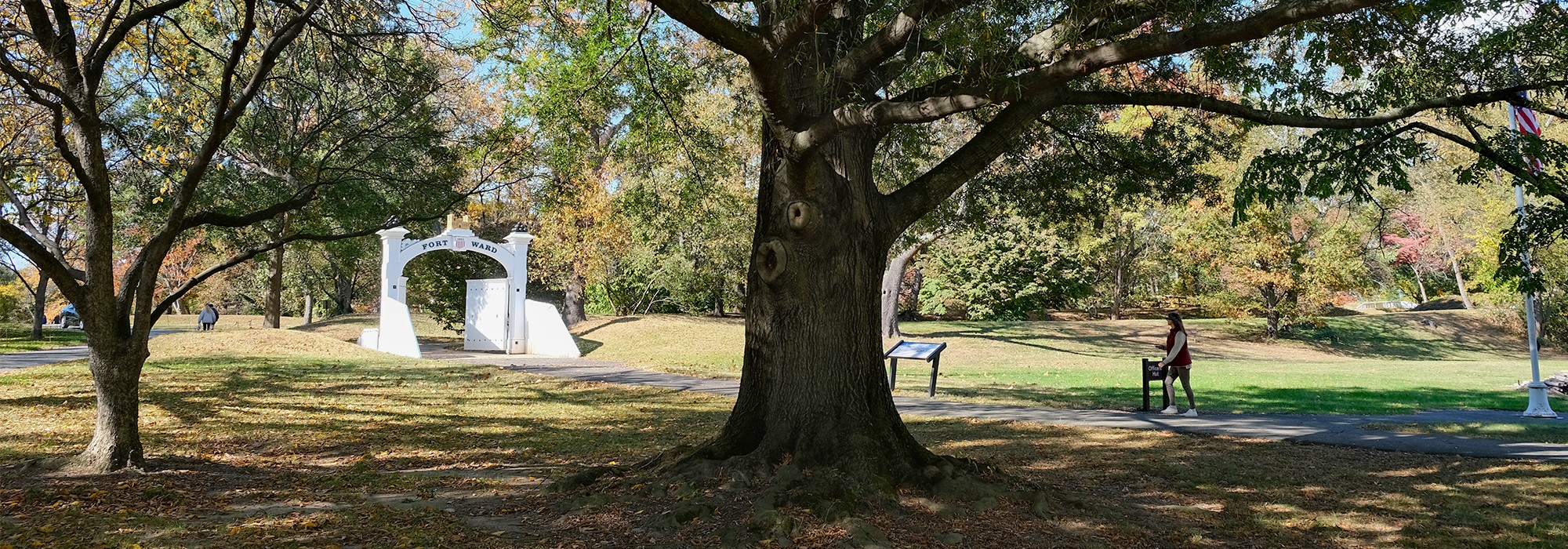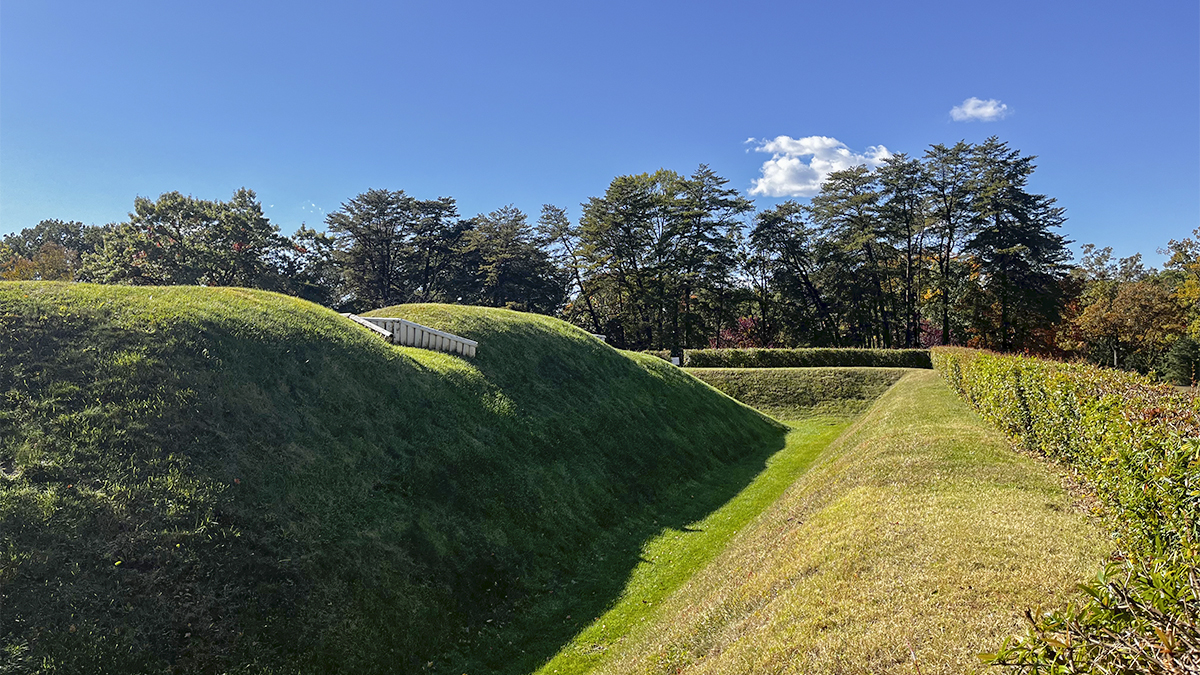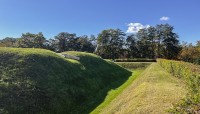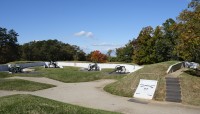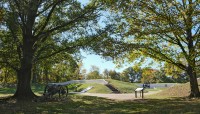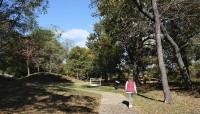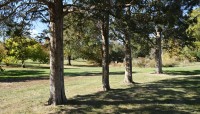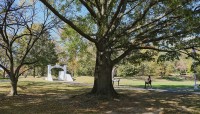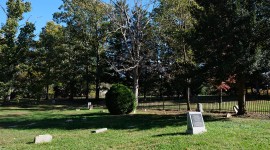Landscape Information
Located in Seminary Hill, this 43.5-acre park features a rehabilitated Civil War-era fortification established in 1861 as part of a network of Union defenses encircling Washington, DC. Enlarged three years later, the star-shaped fort in 1865 was abandoned and dismantled. Subsequently, African American families settled on the site, establishing a community known as “The Fort.” In the 1880s residents began to purchase and develop lots, lay out roads, plant trees, and establish homes and burial plots. Nearly a century after the community was created, the city displaced residents for the creation of the park, which opened in 1964.
Today the park is navigated by a curvilinear drive edged by trees, including oak, maple, and pine, planted irregularly and in copses. The drive encircles the fortification, which is set atop a hill and characterized by sunken trenches and earthen berms buttressed by wooden retaining walls. Accessed from the south, by way of a reconstructed gate (1865), it is flanked to the east and south by densely canopied groves of deciduous and coniferous trees and to north and west by sloping lawns.
The park includes physical reminders of the Fort community, including traces of the historic road network, an allée of cedars planted in the early twentieth century, and four burial plots. One, named Jackson Cemetery, occupies a rolling lawn shaded by an oak tree just south of the fortification. Accessed through the park, the Oakland Baptist Cemetery (1897) occupies a contiguous .47-acre plot on the eastern edge of the site. Fort Ward was listed in the National Register of Historic Places in 1982.



